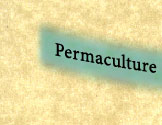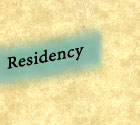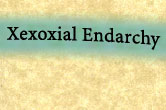|
|
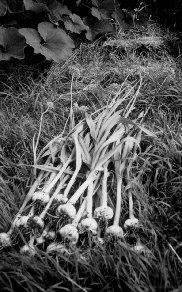
I would like some more information on the actual state
of affairs in Dreamtime Village so I hope to make the article a bit
more up to date.
Lyx:
It's always pretty quiet here in the winter;
some people are off to warmer climates. Those of us left here are quite
busy planning, organizing, cleaning, writing, making contacts on the
web & elsewise, especially to find new people to move here as interns
or residents. We are working on setting visitor & resident policies,
creating a community land trust & a food/shelter cooperative. It seems
like a crucial time to get around to things we have been talking about
for too long: putting out another newsletter, finishing a Dreamtime
brochure, writing grants, publishing the Xexoxial Editions manuscripts
that have been waiting, purging the physical facilities of unused junk,
etc. Also, spring is on the way so we're planning summer events, and
ordering & starting seeds.
The permaculture design of all the grounds
has really begun to take shape over the last couple years; for example,
the vision of picking berries, nuts & other fruits we've planted on
various dt properties becomes more real every year. A greenhouse is
currently being built at the Beaver house, & another is in store "up
on the hill". Our buildings are coming along slowly especially for lack
of funding & labor, but there is movment forward. And the network of
DT friends and supporters continues to flourish.
Dreamtime is still the kind of place about
which people say, "Wow, what incredible potential!" As we slowly but
surely evolve, we're still raw, ripe, and ready for capable & committed
individuals or families to come here be part of the manifestation of
this fabulous potential. There's TONS of work to do here requiring both
skilled and grunt labor, and much joy the fruits of that labor can offer
to those who allow themselves to feel part of things or who are the
type of people whose work is a labor of love.
Those of us already committed to the project
learn lessons & get our shit together a little more every year. We realize
it takes a long time for something as ambitious as this project to gel,
& we wait patiently for each stage to bud & blossom.
How deeply are you influenced by Hakim Bey's thinking.
Did he actually get involved in the making of Dreamtime Village?
Miekal:
We had been in touch with Hakim since the
mid-80s & had had some very enlightening conversations with him about
experiments in community & what he later came to call Temporary Autonomous
Zones. 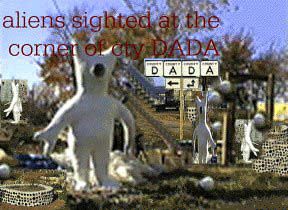 When
we gained access to the properties & were visioning which direction
to plunge into, Hakim was most helpful in lending his experiences of
what works & what doesnt. I believe that besides his obvious historical
& cultural expertise, he also had lived in a community in the past.
I think we were very attracted to his approach because the other model
which is current among most of the communities that we knew of was not
culturally interesting to us & a lot of communities dont embrace experimental
& avant garde media, performance, artistic anarchy, noise, hypermedia
etc. He was also very generous in the first couple years of starting
up the Dreamtime project. When
we gained access to the properties & were visioning which direction
to plunge into, Hakim was most helpful in lending his experiences of
what works & what doesnt. I believe that besides his obvious historical
& cultural expertise, he also had lived in a community in the past.
I think we were very attracted to his approach because the other model
which is current among most of the communities that we knew of was not
culturally interesting to us & a lot of communities dont embrace experimental
& avant garde media, performance, artistic anarchy, noise, hypermedia
etc. He was also very generous in the first couple years of starting
up the Dreamtime project.
I didn't really understand how you linked permaculture
with hypermedia?
Miekal:
First of all, we use hypermedia in a way
that precedes the current fascination with computer hypermedia. We have
been using the term for many years to replace the word "Art", to stand
for the intricate & immaculate processes by which all media, whether
it be sculpture, basketweaving, or computerworks, are inter-related.
"Hyper" in its root form means beyond, so we think of hypermedia as
beyond all distinctions of separate media. By analogue, that is what
is happening with media in the 90s, as all creative processes become
realizable in a digital form, the possibilities of morphing & recombining
form & content is infinite. This notion of hypermedia perfectly complements
permaculture design practices where one is always working creatively
to generate abundance from diversity & edges. So whether one is making
a goat pen or a music concert, the same principles of design can apply.
Why does it cost so much money to stay in Dreamtime Village?
Lyx:
Are you talking about visiting or residing?
"So much money" is a subjective term. Residents put in about $200/month;
visitors $7/day. About 25% of this goes towards food, the rest covers
all our general expenses - taxes, utilities, maintenance, etc. Many
communities charge 5 or even 10 times more than we ask, to visit, or
to reside. People here get not only a place to stay & great food to
eat but access to a plethora of resources: a woodshop, craft shop, pottery
shop; two libraries/reading rooms full of reference books on appropriate
technology, utopian communities, permaculture, organic gardening, art,
poetry, politics, etc.; computer with scanner, laser printer & web access;
dance floor; basketball court, archives of experimental visual/verbal
literature & independently produced zines & other creations, gardens,
orchards, 70 acres of woods & wetlands, opportunity to meet a variety
of interesting people visiting or residing here, etc.
Can you explain the term 'sustainability'? I translated
it with the Dutch term for 'durability' or 'permanence' but it probably
means much more?
Miekal:
Durability has a similar feeling & is appropriate.
Words like "sustainability" & "eco-village" are models to design towards.
I know of very few living projects that are in actuality truly sustainable
unless they are completely cut off from the larger world. I think what
is important about the notion is that our generation is living on a
planet whose resources have been crashing since the atom was split &
industrialization destroyed the concept of wilderness. There are many
ways to model efforts in a sustainable pattern, they are different for
every situation because you are weighing different factors like impact,
energy, outcome along side of what is practical in the moment. We have
inherited a bunch of 100-year old buildings that are very run down.
We have very little money to buy new windows & roofs, so we cannot realistically
turn our community into a solar/wind powered paradise without a tremendous
amount of capital. We can reduce our consumption of energy, dumpster-dive
materials, fix things from already exisiting materials, & grow grow
grow food, medicine, materials for making things, psychotropics & consider
wealth to be what we do have access to rather than what we dont have.
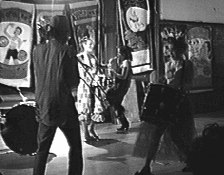 I read somewhere that 'slackers' have to stay away
from the annual Dreamtime Corroboree. Why is that?
I read somewhere that 'slackers' have to stay away
from the annual Dreamtime Corroboree. Why is that?
Lyx:
I would define a 'slacker' as one who sucks
energy from their surroundings without giving much of anything back.
We can neither afford to nor have any desire to support such a relationship
with visitors here. At worst, having such people here is a pain in the
ass & a drain on our existence, at best it's simply unsustainable.
It seems that you try to function as a small legal economic
unity in the bigger economy of the US: you pay taxes, mortgage, etc.
Is that the kind of 'substruction' PM was writing about?
Miekal:
We have no choice as to whether we pay taxes,
etc. The government would quickly find us & we'd be in , how you say,
"hot shit". Our approach is really the opposite, to play by all those
rules & fronts as much as possible, so that our existence is not questioned
for those reasons. We focus mainly on trying to survive elegantly in
a very poor rural area where there are no real jobs, culture, & very
few public resources. So bit by bit we are trying to provide all of
that.
Dreamtime Village has to grow organically by
itself. How do you see that?
Miekal:
There are 2 Dreamtimes. One is the physical
place with the buildings, people & land that are here. That one is easy
to describe. The other Dreamtime is the virtual community made up of
all the people who have lived, visited, helped out, invested time, energy,
& money. 100s of people. Each Dreamtime has a symbiotic relationship
to the other. There can be no forced growth, or avoiding of the natural
rises & falls of the creation of any organism. We have struggled from
the 1st day to make a home that is a village in a very rural area. And
our mission is to create a culture that is our own, not the culture
created by corporations & governments. The biggest struggle, strangely
enough, is that of communicating simple wants, ideas, & beliefs to others.
A lot of people who come here have very little experience with working
with other people, of placing group visions above personal agendas &
communicating openly & honestly. The more we focus on direct contact
& simple exchanges the more our project is enhanced.
Can you give me information about other similar
experiments in the States or in the world?
Miekal:
To be quite honest, our community is not
really like most of the other communities that are open to the public.
I know of one place, called Wise Acres which is in Oregon that has a
lot of interesting things going on, as well as a real focus on tree
planting & bringing back wilderness. And of course there are probably
many many informal communities where the kind of free spirited approach
to living is embraced, but Im not aware of them myself. There is a publication
called the Intentional Communities Directory which has information about
most all of the ones that I am aware of. They have an online presence
as well.
Peter Wullen is a Dutch journalist. This interview
was conducted via email in early February 1998. |
|
